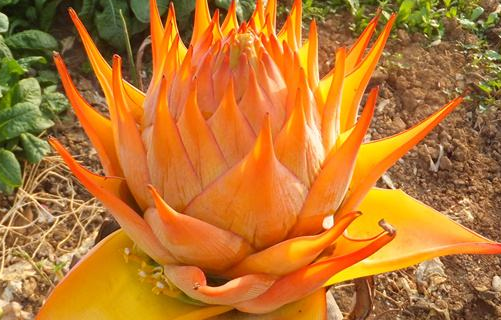How to plant Tribulus terrestris
Tribulus terrestris is a kind of traditional Chinese medicine, which is planted all over our country, but many of us are not familiar with it. In fact, people who have lived in rural areas have basically seen Tribulus terrestris, which generally grows in sandy land, wasteland, hillside and other places. When Tribulus terrestris is fresh, it can be used as feed, and it is its fruit that can be used as medicine. It has the effects of calming the liver and relieving depression, promoting blood circulation and dispelling wind and relieving itching. At the same time, it has a certain curative effect on sexual ability, cerebrovascular system, nervous system, etc., and can also inhibit cancer, reduce blood sugar, regulate blood lipids and so on. So how to plant Tribulus terrestris? Let's follow the editor to learn about it.

1. Soil and fertilizer management
Tribulus terrestris has the characteristics of light-loving, drought-tolerant, dry-loving and adaptable. It has no requirement for soil and can grow in all kinds of soil, but the growth of different soil is different, especially in rainy, waterlogged and stagnant areas. It grows best in fertile and permeable soil. During the soil preparation, Xu Ya combined with the application of organic fertilizer, turned the soil deeply, mixed the soil and organic fertilizer well, and cleaned up the grass in the soil. The clods are broken and made into a high border with a width of about 1 meter to 1.5 meters, leveling the surface of the border, the ditch is about 30 cm deep, and the ditch is in harmony.
2. Scientific reproduction
Tribulus terrestris is generally propagated by seeds, and the best time to sow is from the end of March to the beginning of April each year. Before sowing, we need to grind the seeds twice with a rice mill, and then screen out good seeds with full grains and no damage. After selecting the seeds, you can sow the seeds directly, but it is best to soak them in a water-retaining agent for about half an hour before sowing. When sowing, Anzhao row spacing is 50 cm, plant spacing is about 35 cm to dig holes to sow, after sowing cover soil to cover seeds, irrigate the right amount of water, which is conducive to seedling emergence.
3. Field management
When the seedlings of Tribulus terrestris in the field grow to about six or seven centimeters, we should pull out the weak seedlings and overdense seedlings in the field, and then check the growth of Tribulus terrestris in the field, and replenish the seedlings in time to ensure that the seedlings are uniform in the field. After emergence, the field will also be accompanied by the growth of weeds, so the weeding should be carried out in time, and the second intertillage should be carried out after planting, generally two intertillage and at least three weeding. In the case of sufficient base fertilizer, topdressing is carried out according to the growth of seedlings, usually twice, mainly feces and urine water. In order to promote the seed ripening, we need to pinch the top and promote the growth of lateral branches in order to increase the yield and accelerate the ripening.
4. Pest control
Wild Tribulus terrestris has strong disease resistance, but there are many diseases and insect pests in artificial cultivation, so we need to prepare in advance to prevent diseases and insect pests in the process of planting. The most important diseases are white rust, black spot, powdery mildew, rust and quenching. We can use nail cream copper wettable powder, Dysen zinc wettable powder, sulfur gel suspension, triadimefon (triadimefon) wettable powder and Quechujing respectively. The most important pests are crickets, bean aphids, red spiders, pearl scale and so on, which can be controlled by trichlorfon.
The above is the planting method of Tribulus terrestris. That's all for the editor's introduction today. I hope it can help all of you who love planting. If you want to know more about other planting, you can consult the editor.
- Prev

How to raise seedlings of Atractylodes macrocephala Koidz
How to raise seedlings of Atractylodes macrocephala Koidz
- Next

How to raise Jinlian in Diyong
Temperature Yong Jinlian likes to grow in a warm environment, so pay attention to keep the plant warm in winter to avoid frostbite, its cold tolerance is relatively poor. Jinlian likes sunshine very much. Only by receiving enough light during the growing period can it grow healthily. Pay attention to it in summer.
Related
- Fuxing push coffee new agricultural production and marketing class: lack of small-scale processing plants
- Jujube rice field leisure farm deep ploughing Yilan for five years to create a space for organic food and play
- Nongyu Farm-A trial of organic papaya for brave women with advanced technology
- Four points for attention in the prevention and control of diseases and insect pests of edible fungi
- How to add nutrient solution to Edible Fungi
- Is there any good way to control edible fungus mites?
- Open Inoculation Technology of Edible Fungi
- Is there any clever way to use fertilizer for edible fungus in winter?
- What agents are used to kill the pathogens of edible fungi in the mushroom shed?
- Rapid drying of Edible Fungi

